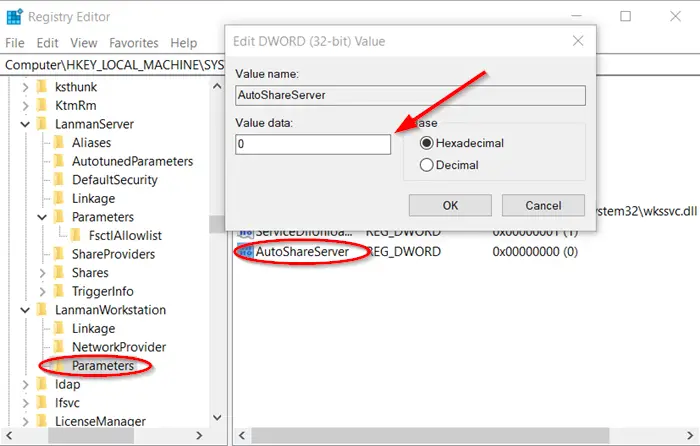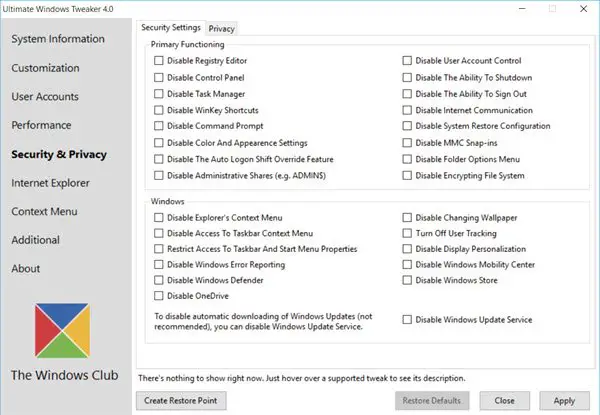How to Remove Administrative Shares in Windows Server 2012
When multiple computers are connected to a network, Windows automatically creates Administrative Shares to allow remote access for various operations. This enables Administrators and support technicians to manage services, effectively. In some cases, such shares can be a potential security threat for your system. As such, it is better to remove Administrative Shares from Windows Server. Here is how to get rid of them.
Disable Administrative Shares from Windows Server
If you are not aware, these special shared resources are not visible in 'File Explorer' or under 'This PC' section. To view them, you'll have to bring 'Share Folders' tool into use. The tool can be found readily under 'Computer Management'. Then, to remove the special shared resources and prevent them from being created automatically,
- Use Registry
- Use Ultimate Windows Tweaker
You can recognize an administrative share when a drive letter or folder name has a '$' sign attached at the end. Example,
- DriveLetter$: This is a shared root partition or volume. Shared root partitions and volumes are displayed as the drive letter name appended with the dollar sign ($). For example, when drive letters C and D are shared, they are shown as C$ and D$.
- ADMIN$: It represents a resource mainly used during the remote administration of a computer.
- PRINT$: Used during the remote administration of printers.
- FAX$: A shared folder on a server, used by fax clients during fax transmission.
To remove administrative shares and prevent them from being automatically created in Windows,
1] Using Registry

Please note that the method involves steps that require you how to modify the registry. However, serious problems might occur if you modify the registry incorrectly. Make sure that you follow these steps carefully. For added protection, back up the registry before you modify it.
Launch the 'Run' dialog box by pressing Win+R in combination.
In the box that appears, type 'regedit.exe' and hit 'Enter' key.
Next, in the 'Registry Editor' window that opens, navigate to the following path address –
HKEY_LOCAL_MACHINE\SYSTEM\CurrentControlSet\Services\LanmanServer\Parameters\AutoShareServer.
Here, the registry subkey 'AutoShareServer' must be set as type REG_DWORD.
When its value is set to 0 (zero), Windows does not automatically create administrative shares. As such, you'll need to change this value if it's not set to '0'. For this, double-click the value to open Edit String box
In the Value data box, type 0, and then click OK.
Exit Registry Editor.
Once done, stop and then start the Server service. For this, this,
Again, open the 'Run' dialog box by pressing Win+R in combination.
In the box that appears, type 'cmd' and then click OK.
When the command prompt window opens, type the following lines. Press Enter after each line:
net stop server
net start server
Type exit to close the Command Prompt window.
This should fix the problem.
2] Using Ultimate Windows Tweaker

Our freeware Ultimate Windows Tweaker lets you remove administrative shares from Windows in one click.
Simply launch the utility, go to Security & Privacy > Security Settings. Here, you can Disable Administrative Shares.
Hope this helps!

Anand Khanse is the Admin of TheWindowsClub.com, a 10-year Microsoft MVP (2006-16) & a Windows Insider MVP. Please read the entire post & the comments first, create a System Restore Point before making any changes to your system & be careful about any 3rd-party offers while installing freeware.
How to Remove Administrative Shares in Windows Server 2012
Source: https://www.thewindowsclub.com/how-to-remove-administrative-shares-in-windows-server